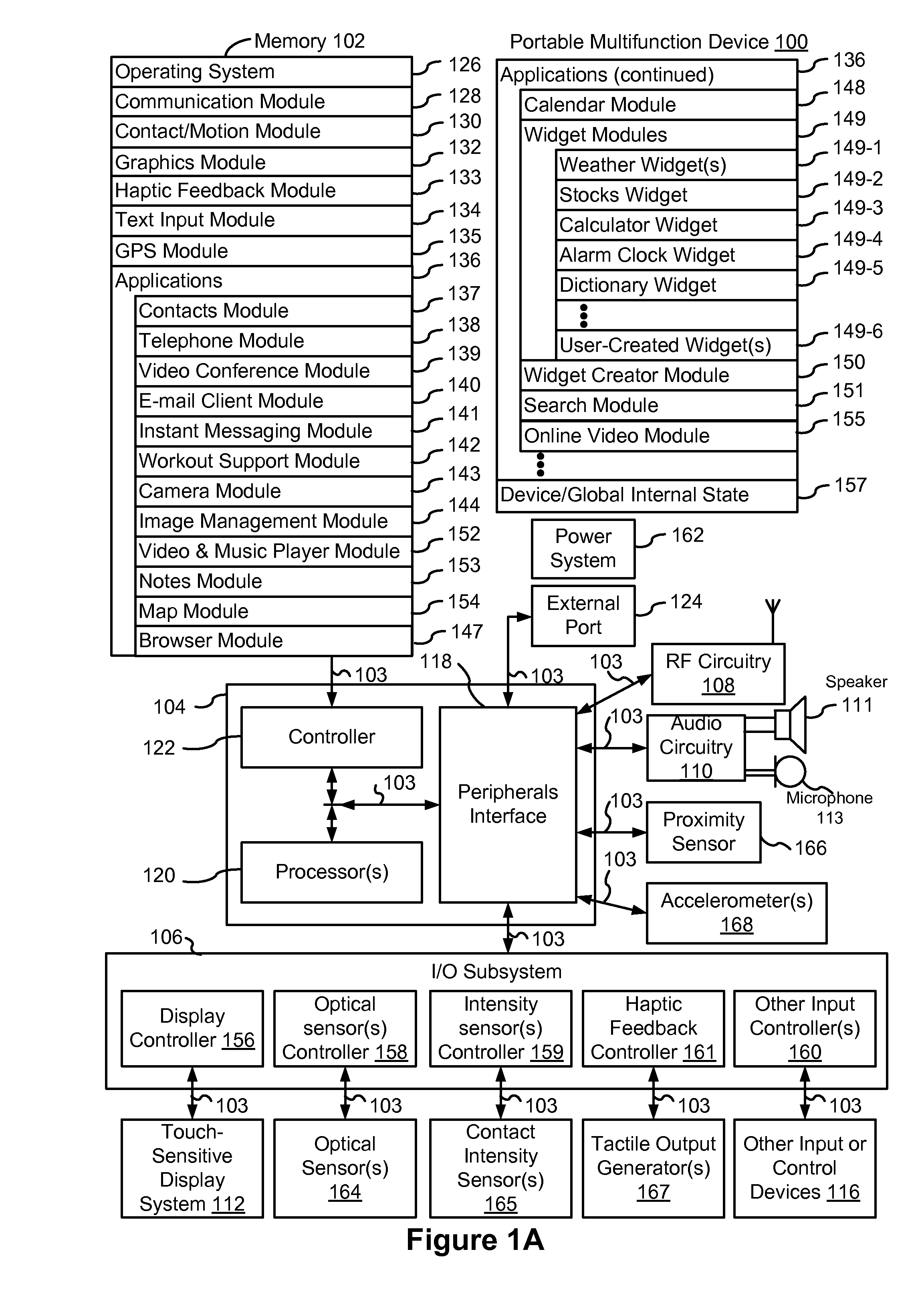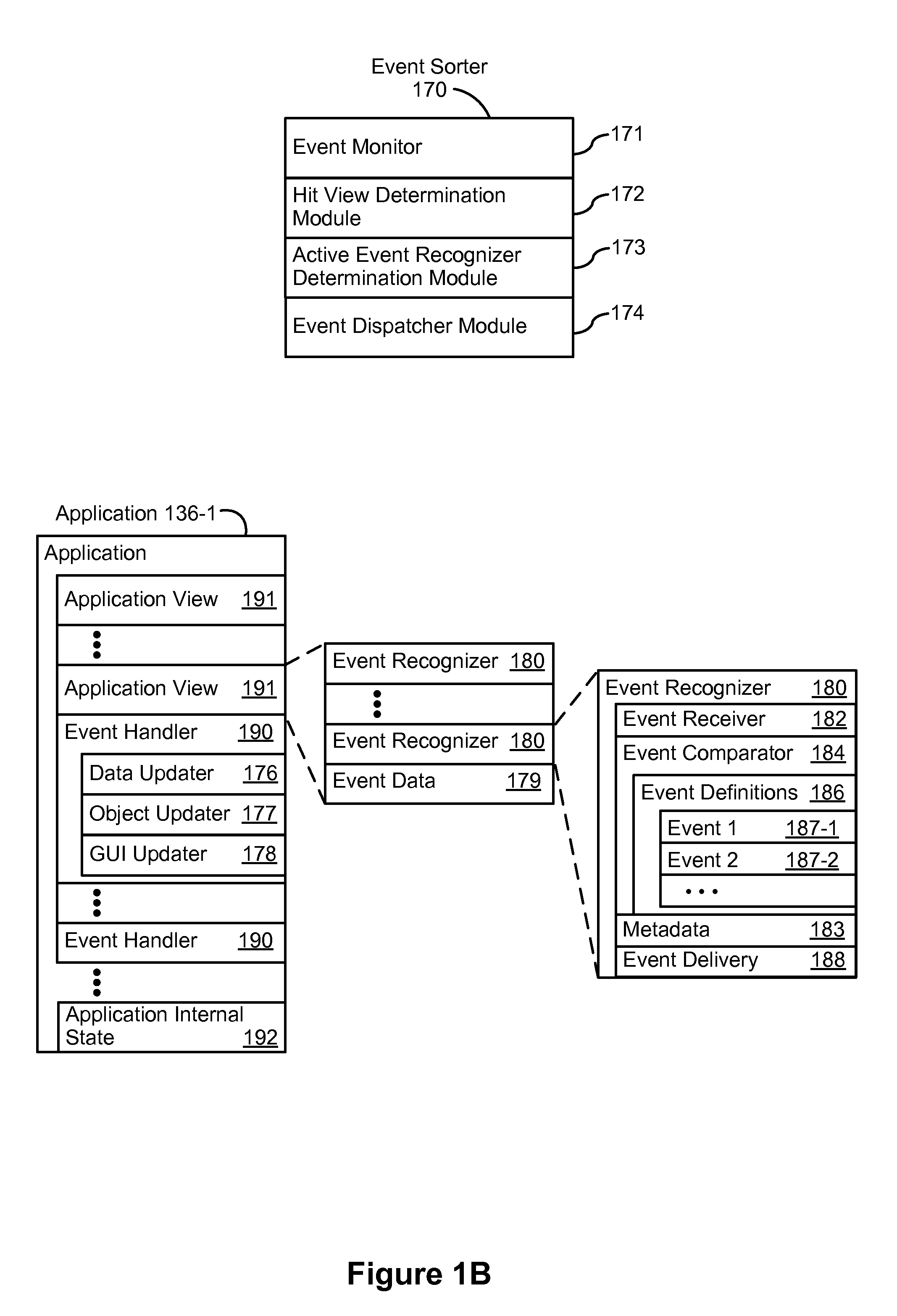Device, Method, and Graphical User Interface for Collaborative Editing in Documents
a collaborative editing and user interface technology, applied in static indicating devices, visual/graphical programming, instruments, etc., can solve the problems of reducing memory usage and processing power consumed to process user inputs, and achieve faster, more efficient methods and interfaces, and reduce the burden on users
- Summary
- Abstract
- Description
- Claims
- Application Information
AI Technical Summary
Benefits of technology
Problems solved by technology
Method used
Image
Examples
Embodiment Construction
[0029]Collaborative editing of an electronic document (e.g., a word processing document, a note page, a sketch, a content page, etc.) may be carried out by multiple users from multiple electronic devices or by the same user using multiple devices. The edits may be entered at different devices at the same time or at different times. Sometimes, edits received at different devices may coexist and be non-interfering of one another in a merged document; at other times, edits received at different devices may affect the same portion of the document and raise a conflict in a merged document. Conflicting edits may be entered concurrently or at different times. Sometimes, collaborating devices are located in proximity to one another such that near-range communication (e.g., communication via Bluetooth or Infrared communication interfaces) may occur between the devices without using a Wide Area Network (WAN) or Local Area Network (LAN). Sometimes, collaborating devices are located remotely fr...
PUM
 Login to View More
Login to View More Abstract
Description
Claims
Application Information
 Login to View More
Login to View More - R&D
- Intellectual Property
- Life Sciences
- Materials
- Tech Scout
- Unparalleled Data Quality
- Higher Quality Content
- 60% Fewer Hallucinations
Browse by: Latest US Patents, China's latest patents, Technical Efficacy Thesaurus, Application Domain, Technology Topic, Popular Technical Reports.
© 2025 PatSnap. All rights reserved.Legal|Privacy policy|Modern Slavery Act Transparency Statement|Sitemap|About US| Contact US: help@patsnap.com



